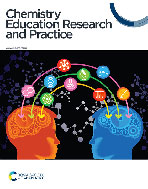Messages about valued knowledge products and processes embedded within a suite of transformed high school chemistry curricular materials
Abstract
The way high school chemistry curricula are structured has the potential to convey consequential messages about knowledge and knowing to students and teachers. If a curriculum is built around practicing skills and recalling facts to reach “correct” answers, it is unlikely class activities will be seen (by students or the teacher) as opportunities to figure out causes for phenomena. Our team of teachers and researchers is working to understand how enactment of transformed curricular materials can support high school chemistry students in making sense of perplexing, relatable phenomena. Given this goal, we were surprised to see that co-developers who enacted our materials overwhelmingly emphasized the importance of acquiring true facts/skills when writing weekly reflections. Recognition that teachers’ expressed aims did not align with our stated goal of “supporting molecular-level sensemaking” led us to examine whether the tacit epistemological commitments reflected by our materials were, in fact, consistent with a course focused on figuring out phenomena. We described several aspects of each lesson in our two-semester curriculum including: the role of phenomena in lesson activities, the extent to which lessons were 3-dimensional, the role of student ideas in class dialogue, and who established coherence between lessons. Triangulation of these lesson features enabled us to infer messages about valued knowledge products and processes materials had the potential to send. We observed that our materials commonly encouraged students to mimic the structure of science practices for the purpose of being evaluated by the teacher. That is, students were asked to “go through the motions” of explaining, modeling etc. but had little agency regarding the sorts of models and explanations they found productive in their class community. This study serves to illustrate the importance of surfacing the tacit epistemological commitments that guide curriculum development. Additionally, it extends existing scholarship on epistemological messaging by considering curricular materials as a potentially consequential sources of messages.


 Please wait while we load your content...
Please wait while we load your content...